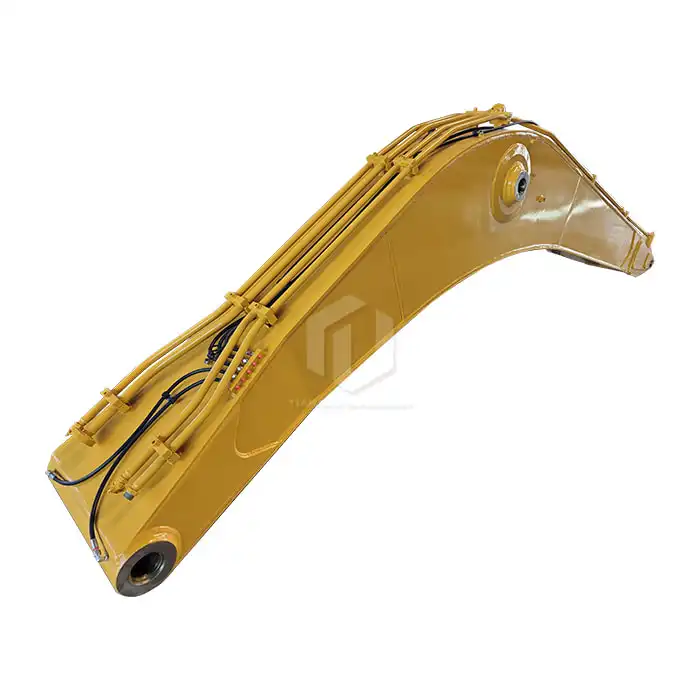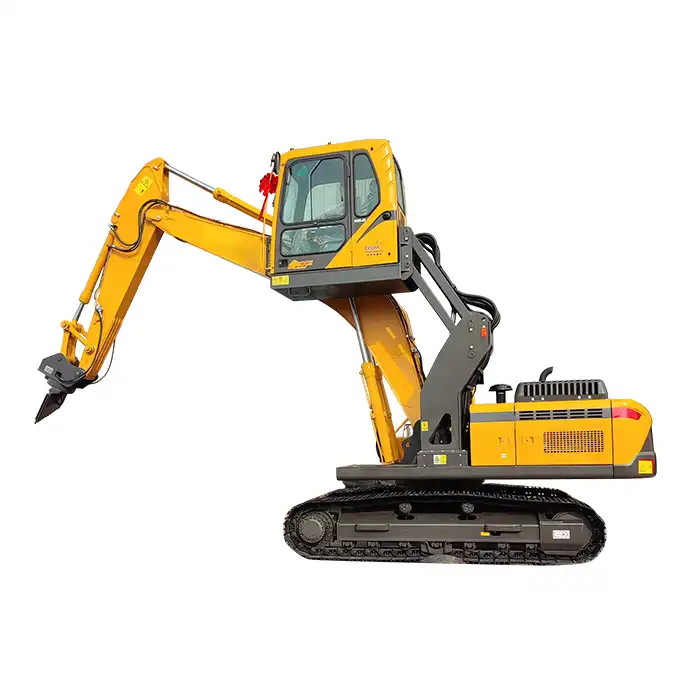What are the operational differences between a dragline bucket and a clamshell bucket?
The operational differences between dragline buckets and clamshell buckets are significant and directly impact their effectiveness in various applications. Dragline buckets operate through a dragging motion, using a system of cables to pull material toward the excavator. They excel in long-distance excavation scenarios and are particularly effective for removing topsoil and overburden. In contrast, the latter functions with a vertical digging action through a hinged, two-piece design that opens and closes to capture material. This vertical operation makes clamshell products ideal for precise digging in confined spaces, deep excavation projects, and handling loose materials. The motion mechanics, operational control, and application versatility differ substantially between these attachments, with draglines better suited for horizontal material movement over them excelling in vertical extraction operations requiring precision and control in limited spaces.
Function: Dragline Bucket VS Clamshell Bucket
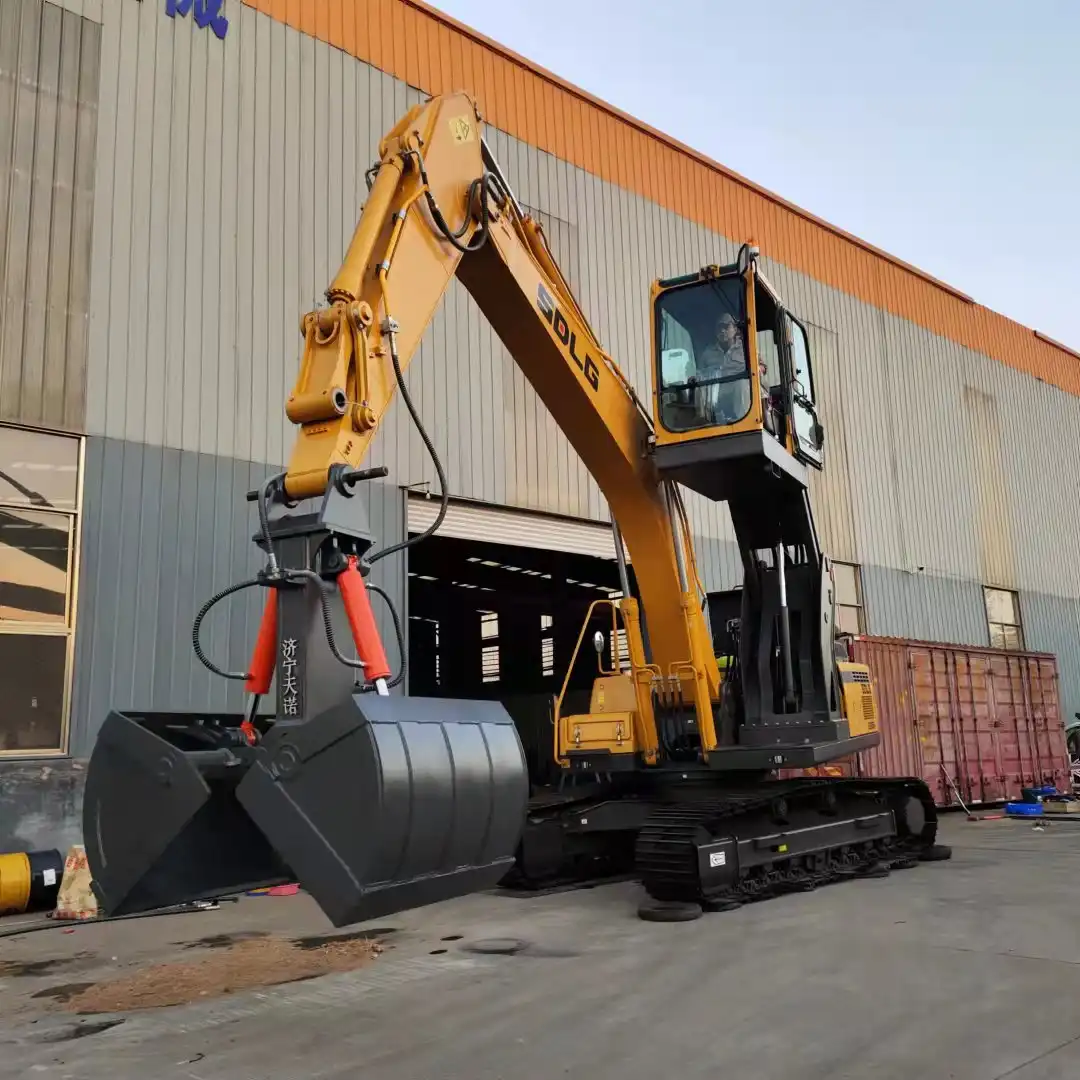
Design and Structure Comparison
Dragline buckets feature a single-piece, open-faced design with a cutting edge along the bottom and sides. The bucket connects to the excavator via two primary cables—the hoist cable that raises and lowers the bucket and the drag cable that pulls the bucket toward the machine. The structure includes manganese steel teeth along the cutting edge to penetrate resistant materials and a heavy-duty lip design to withstand the abrasive dragging action.
In comparison, clamshell buckets utilize a two-piece, hinged design resembling jaws that open and close. The mechanism consists of two symmetrical shells connected by a central pivot point with hydraulic cylinders or cable systems controlling the opening and closing action. Many modern buckets incorporate high-tensile steel construction, reinforced edges, and specialized teeth configurations based on the intended application, whether handling bulk materials, excavating soil, or managing debris.
Material Handling Capabilities
Dragline buckets excel at handling cohesive materials like clay, soil, and sand. The dragging motion facilitates efficient material collection over extended distances, making them particularly effective for stripping operations where materials must be moved horizontally before being lifted. Their design limitations include reduced effectiveness with very loose materials that might escape during the dragging process.
Clamshell buckets demonstrate superior performance with both cohesive and loose materials, including gravel, coal, and demolition debris. The vertical closing action securely captures materials with minimal spillage, particularly beneficial when handling granular substances. Most bucket designs feature sealed edges that prevent material leakage during transport, enhancing efficiency when handling fine materials like sand or silt.
Load Capacity and Weight Distribution
Dragline buckets typically offer larger load capacities, sometimes exceeding 100 cubic yards in mining applications. Their design distributes weight primarily toward the cutting edge, creating a mechanical advantage during the dragging operation. This weight distribution enhances penetration force but can create stability challenges when fully loaded.
Clamshell buckets generally provide more balanced weight distribution, with load capacities varying widely based on application requirements. The balanced design improves stability during lifting operations, reducing stress on the carrier machine. Heavy-duty buckets used in dredging may incorporate additional ballast within the shells to enhance closing force when operating underwater.
Operation: Dragline Bucket VS Clamshell Bucket
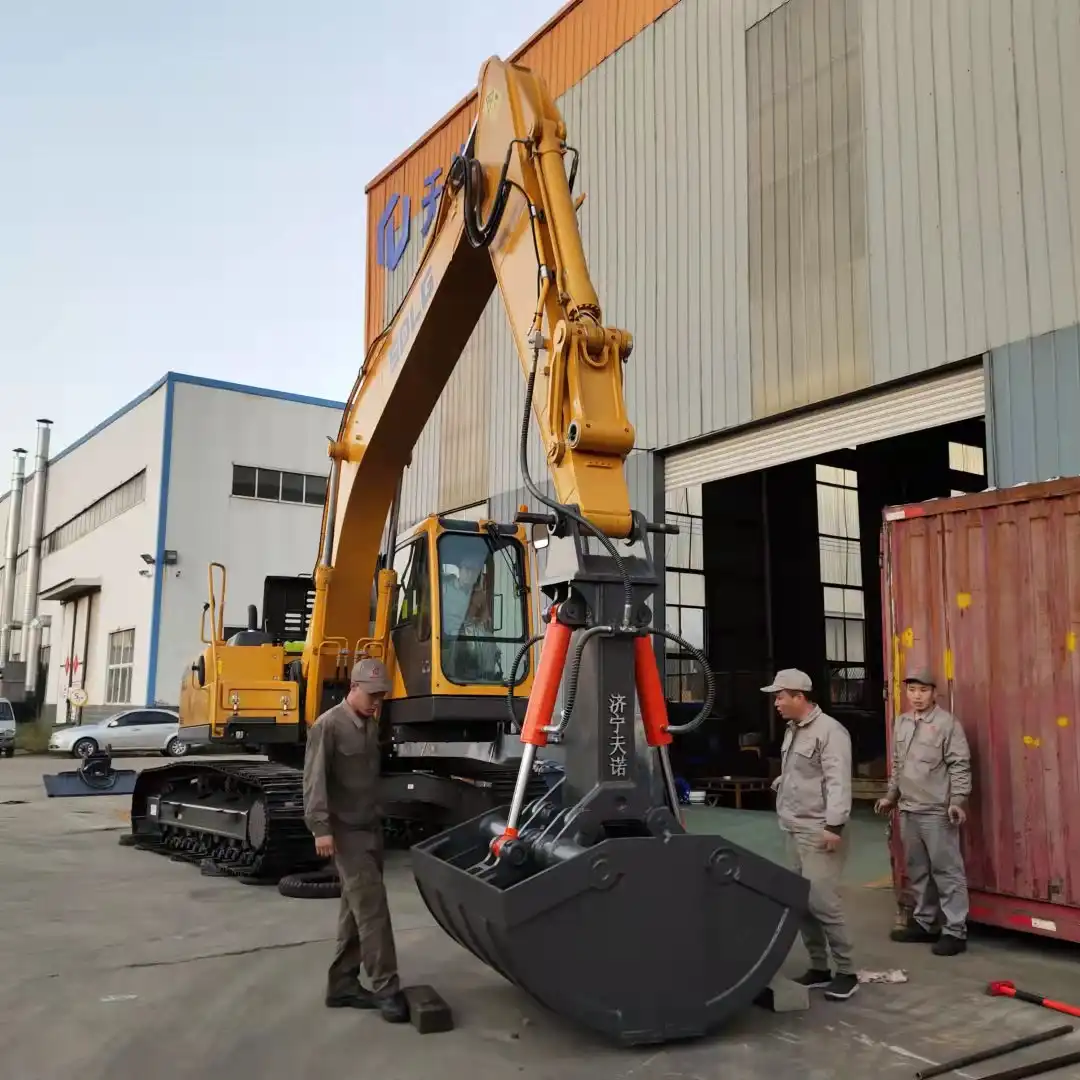
Motion Mechanics and Control Systems
Dragline buckets operate through a complex interplay of two primary cables. The operator must coordinate the tension between the hoist cable (lifting) and drag cable (pulling) to achieve the desired excavation path. This dual-cable system requires significant skill to master, as improper cable tension can result in reduced efficiency or bucket destabilization. Advanced dragline systems incorporate electronic monitoring to maintain optimal cable tension throughout the operating cycle.
Clamshell buckets function through more straightforward vertical movement, either via hydraulic actuation or cable systems. Hydraulic buckets offer precise control through a direct connection to the excavator's hydraulic system, allowing operators to modulate closing force based on material characteristics. Cable-operated buckets utilize a system of closing lines and holding lines, requiring coordination to maintain stability during operation. Modern bucket designs incorporate proportional control systems that adjust closing pressure automatically based on the resistance encountered.
Digging Technique and Efficiency
Dragline buckets employ a horizontal scraping technique where the bucket is positioned beyond the material, lowered to the appropriate depth, and then dragged toward the machine. This method excels in removing relatively thin layers of material over wide areas. Efficiency depends on maintaining the optimal angle between the bucket and the material surface—typically 30-45 degrees for maximum penetration and filling.
Clamshell buckets utilize a vertical penetration technique where the open bucket is positioned above the target area and dropped or lowered into the material. The shells then close to capture the load before lifting. This method proves highly efficient for deep, concentrated excavation where horizontal movement is limited. its efficiency depends largely on proper positioning before dropping and appropriate closing timing to maximize material capture without exceeding machine capacity.
Operational Challenges and Limitations
Dragline buckets face several operational challenges, including reduced effectiveness in hard or rocky materials where the dragging action becomes inefficient. Their operation requires substantial clear space for the swing radius and cable management. Additionally, depth limitations exist based on the available cable length and machine power.
Clamshell buckets encounter different challenges, particularly when dealing with highly compacted materials that resist penetration by the vertical dropping action. Their effectiveness diminishes in situations requiring lateral force application, such as breaking through crusted surfaces. Cable-operated buckets may experience reduced precision in windy conditions that affect the bucket's positioning before closing.
Applications: Dragline Bucket VS Clamshell Bucket
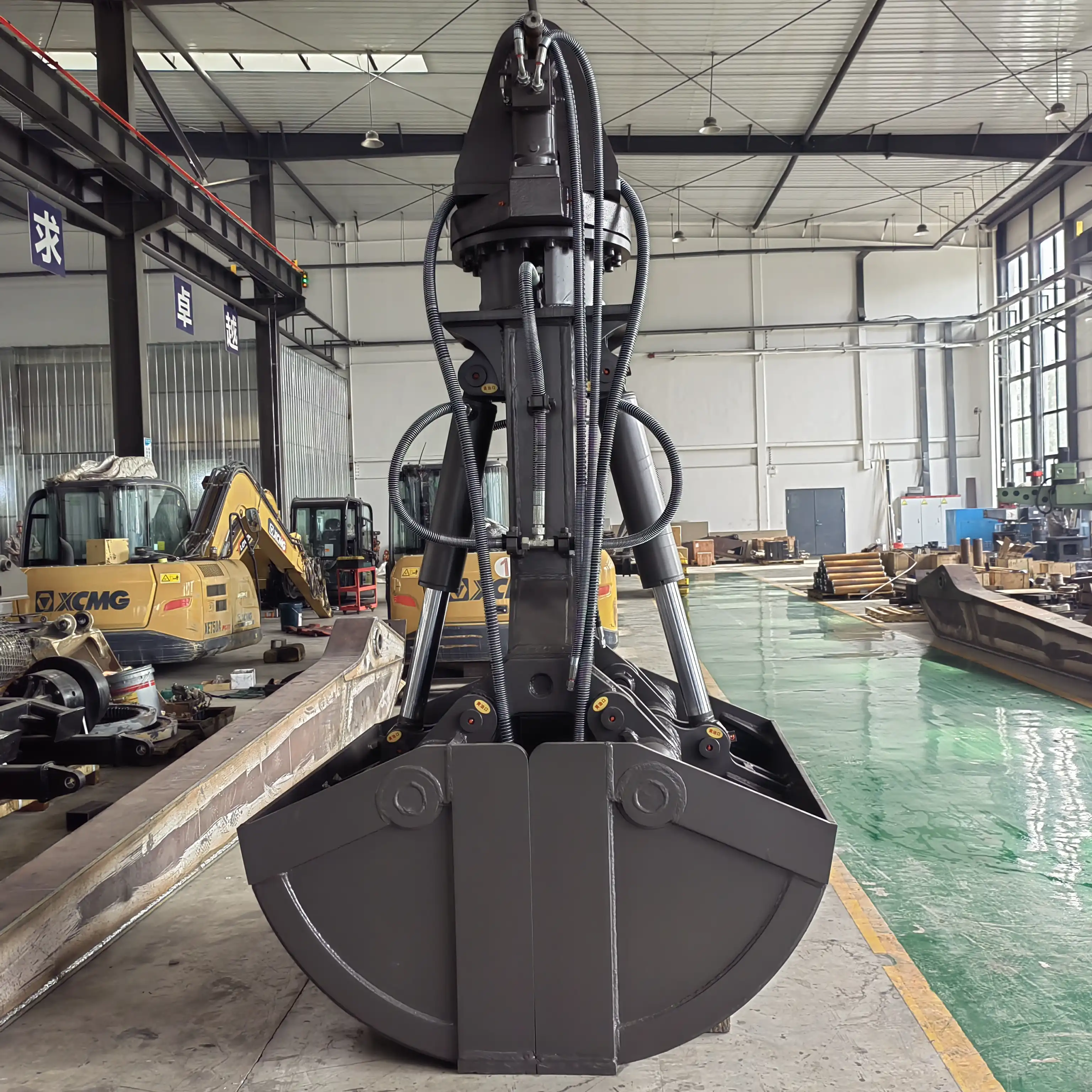
Industry-Specific Applications
Dragline buckets dominate in surface mining operations, particularly coal extraction, where their ability to remove vast quantities of overburden proves invaluable. They also excel in large-scale earthmoving projects like dam construction and land reclamation. Railway maintenance teams deploy smaller dragline attachments for trackside drainage management and ballast regulation.
Clamshell buckets find extensive application in dredging operations where their vertical digging action effectively removes sediment from waterways and harbors. Construction firms utilize these buckets for foundation excavation, especially in urban environments with space constraints. Waste management facilities employ specialized buckets for material sorting and transfer operations. In railway maintenance, clamshell buckets excel at precise ballast placement and removal in confined spaces between tracks or near structures.
Environmental Considerations
Dragline operations typically create more ground disturbance due to their dragging action, potentially increasing erosion concerns in sensitive areas. Their efficiency in large-scale operations can reduce overall project duration, minimizing the temporal impact of construction activities. Some modern dragline systems incorporate GPS and machine control technology to improve precision and reduce unnecessary excavation.
Clamshell buckets generally cause less ground disturbance outside the immediate work area, making them preferable for environmentally sensitive projects. Their precision allows for selective material removal, reducing waste generation and preserving surrounding areas. When used in underwater applications, hydraulic buckets typically cause less sediment dispersion than dragline alternatives, minimizing impact on aquatic ecosystems.
Cost-Effectiveness Analysis
Dragline systems typically involve higher initial investment due to the specialized nature of the carrier machine and associated infrastructure. Their operational efficiency in appropriate applications often justifies this cost through significantly higher material movement rates. Maintenance costs focus primarily on cable inspection and replacement, with regular attention required to pulleys and fairleads.
Clamshell buckets generally offer lower entry costs, especially hydraulic versions that can attach to standard excavators without extensive modifications. Their versatility across multiple applications improves return on investment through higher utilization rates. Maintenance requirements center on hydraulic system integrity or, for cable-operated models, similar cable management to draglines but at a smaller scale. The precision of buckets can reduce overall project costs by minimizing overexcavation and associated material handling expenses.
FAQ
Which is better for railway maintenance: dragline buckets or clamshell buckets?
For railway maintenance, both attachments serve different purposes. Dragline buckets work better for extensive trackside drainage work and ballast regulation over longer sections. These buckets excel at precise operations in confined spaces, such as between tracks or near overhead structures, making them ideal for targeted ballast replacement and maintenance in stations or yards where precision matters more than volume.
Can a single machine operate both dragline and clamshell attachments?
While theoretically possible, most machines are optimized for either dragline or clamshell operations. Purpose-built dragline excavators typically cannot accommodate clamshell buckets without significant modification. However, some modern hydraulic excavators can be fitted with either attachment type by changing the front-end equipment, though this conversion requires substantial time and specialized knowledge.
How do underwater operations differ between these bucket types?
Underwater operations highlight significant differences between these bucket types. Draglines perform poorly underwater due to increased cable drag and reduced visibility affecting operator precision. Clamshell buckets, particularly hydraulic models designed for marine use, maintain effectiveness underwater and are the preferred choice for dredging and underwater excavation due to their vertical action and sealed design that minimizes material loss during lifting.
What maintenance considerations differ between dragline and clamshell buckets?
Dragline buckets require frequent inspection of cables for wear, damage, or appropriate tension. The dragging action creates substantial wear on the cutting edge and teeth, necessitating regular replacement. Clamshell products require maintenance focused on the hinge mechanism, hydraulic components if applicable, and the sealing edges between the shells. Hydraulic buckets need particular attention to cylinder seals and hydraulic lines to prevent fluid leaks.
About TianNuo
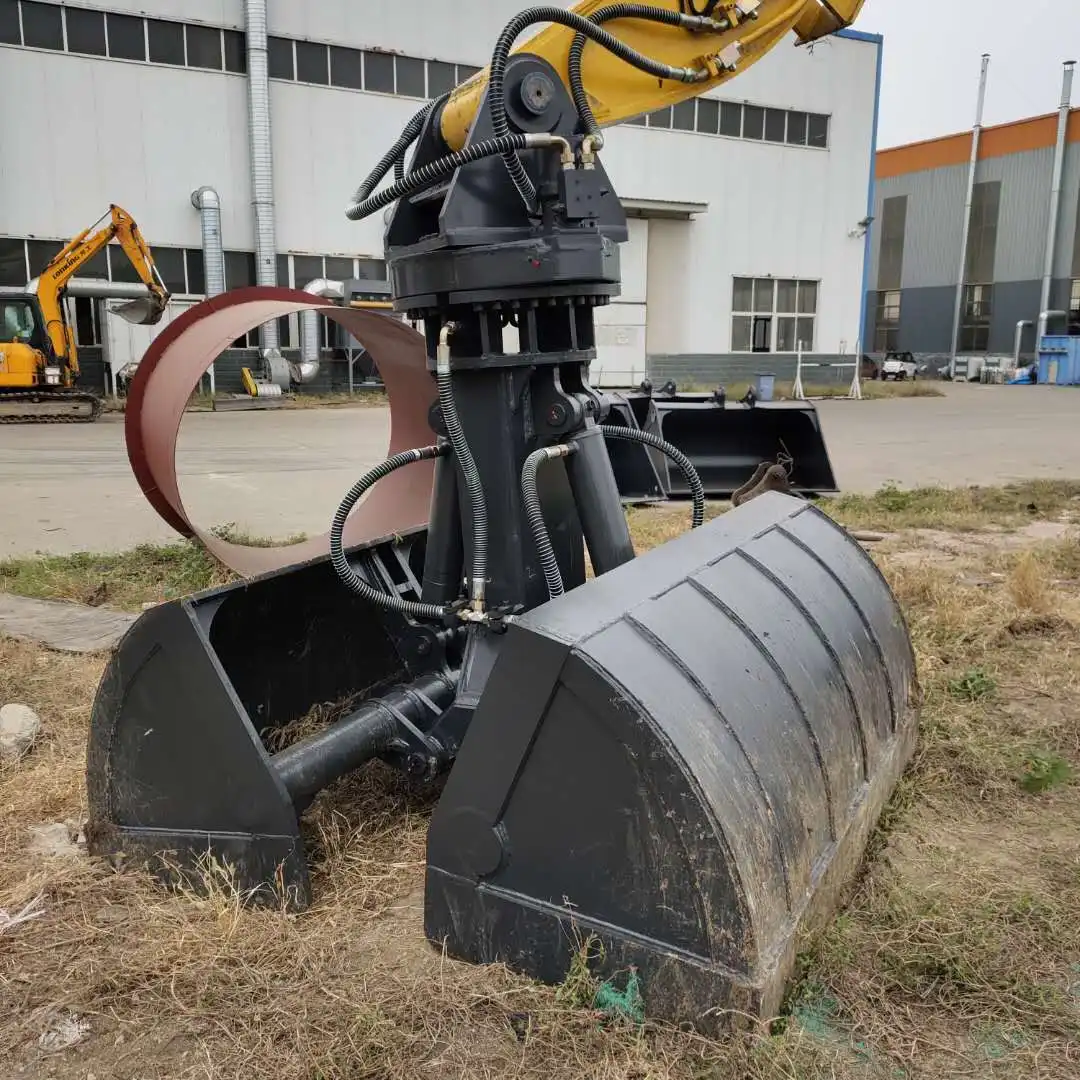
For industries requiring specialized excavation solutions, selecting the right equipment partner proves equally important as choosing the appropriate attachment. TianNuo Machinery offers comprehensive expertise in both dragline and clamshell bucket technology, with custom manufacturing capabilities tailored to specific operational requirements. For additional information regarding custom excavation solutions or technical specifications for railway maintenance applications, contact our engineering team at arm@stnd-machinery.com, rich@stnd-machinery.com, or tn@stnd-machinery.com.
References
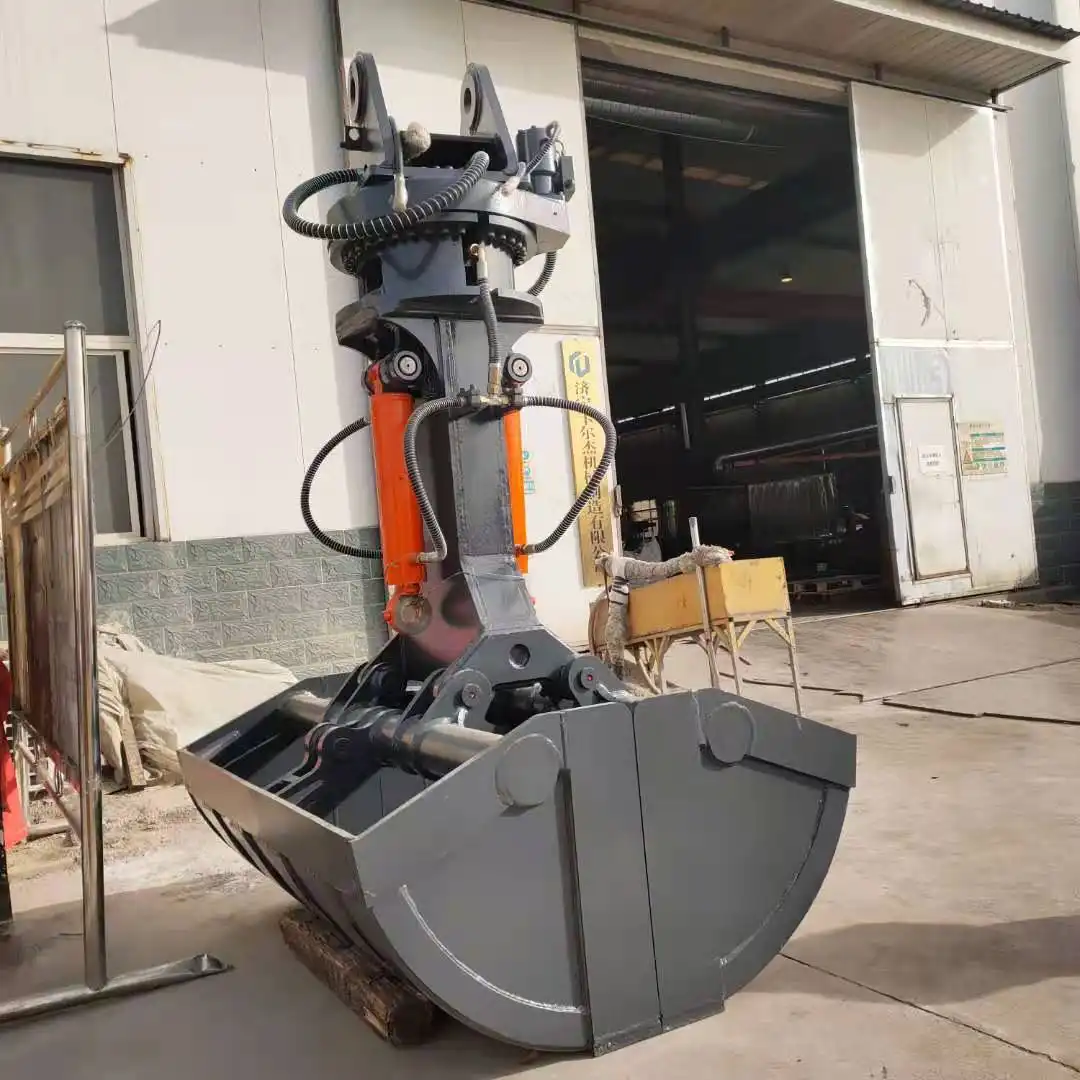
Journal of Construction Engineering and Management. "Comparative Analysis of Excavation Equipment Efficiency in Urban Construction Projects." Volume 37, Issue 4, 2023.
International Conference on Mining Engineering and Mineral Processing. "Evolution of Dragline Bucket Design for Enhanced Productivity in Surface Mining." Proceedings 2022.
Handbook of Dredging Engineering. "Modern Clamshell Bucket Technology for Environmental Dredging Applications." Third Edition, 2021.
Railway Maintenance Technology Review. "Equipment Selection Guidelines for Ballast Management and Track Substructure Renovation." Volume 15, 2023.
Construction Equipment Utilization and Management. "Cost-Benefit Analysis of Specialized Excavation Attachments in Infrastructure Development." McGraw Publishing, 2022.
Journal of Maritime Engineering. "Underwater Excavation Techniques: A Comparative Study of Equipment Performance in Harbor Deepening Projects." Volume 28, Issue 2, 2023.
About Author: Arm
Arm is a leading expert in the field of specialized construction and railway maintenance equipment, working at Tiannuo Company.

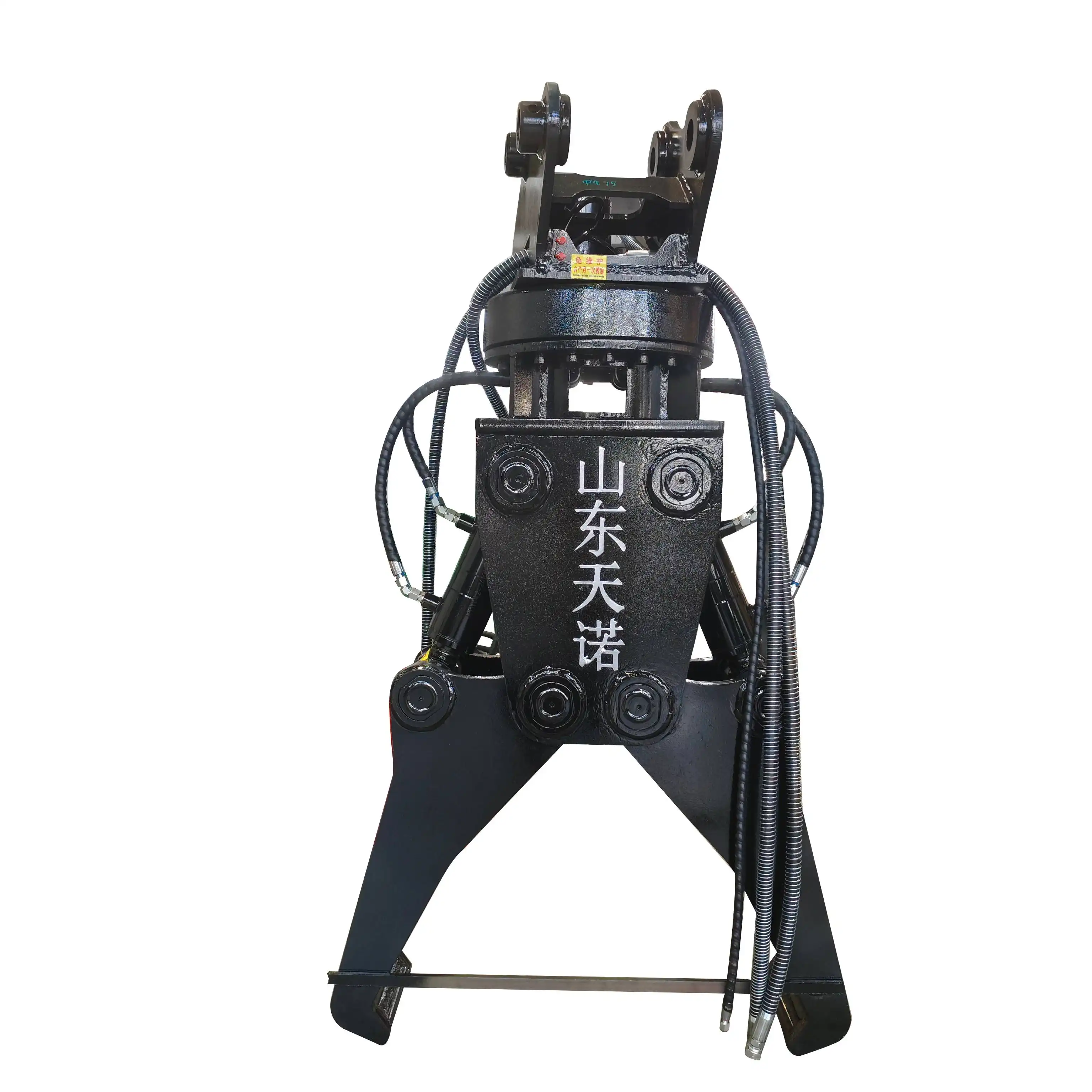


_1740558626327.webp)


